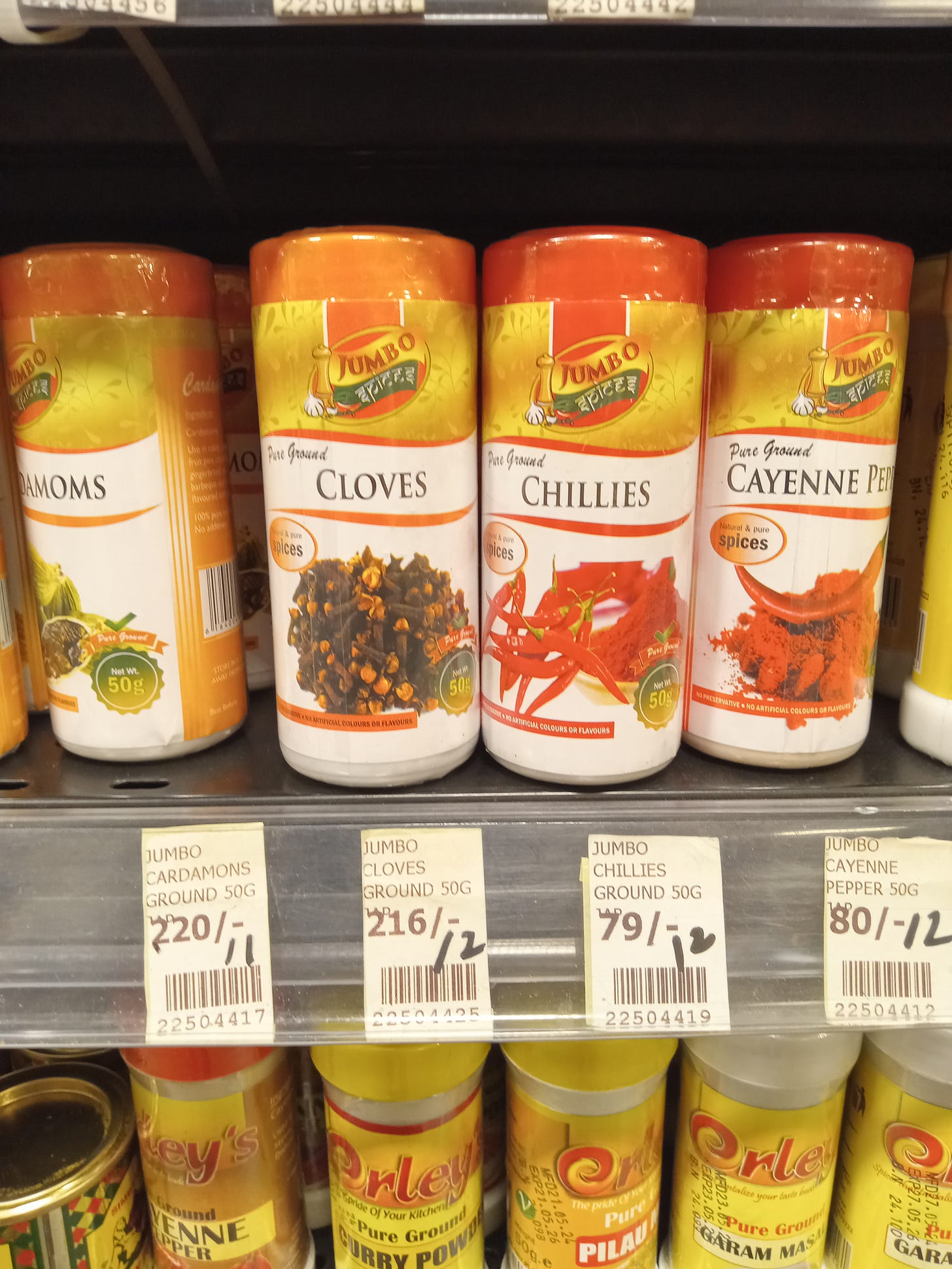The AfCFTA: Your Guide to Value Addition–What Exactly is It?
Using Cloves to Demonstrate
A couple of weeks ago, a friend visited my mum and brought her cloves. Cloves are dried flower buds from the clove tree, primarily used as a spice in soups, meats, and even tea (well, Kenyan tea).
My mum appreciated the cloves but informed her friend they would remain unused unless she ground the flower buds before leaving. That same friend had brought black pepper seeds on a prior visit, and they’d sat pretty on the shelf since.
So we all piled into the kitchen to watch her do her thing.
Within minutes, the largely unusable clove buds had transformed into incredibly usable clove powder.
Watching that transformation brought up the idea of adding value and how it can be as simple as grinding flower buds into powder with a blender, a staple in most kitchens.
When African leaders talk of adding value, it is always in the context of these big speeches, which can sometimes sound unattainable to the typical small-scale businessperson on the continent.
Take the speech by Wamkele Mene, the Secretary General of the AfCFTA Secretariat, on January 1st, 2021, when Africans could officially start trading under the AfCFTA preferences.
“We have to take, as Africans, active steps to overcome the smallness of our respective national economies. We have to take active steps to overcome the lack of economies of scale. We have to take active steps to make sure that we place Africa on the path of industrial development so that by the year 2035, we’re able to double intra-Africa trade with value-added goods.”
Did you catch that?
Mohamed Ali, Director of Trade in Goods and Competition at the AfCFTA Secretariat, also commented last year.
“The AfCFTA is more than just tariff reductions; it enables investors to have access to that huge market which will attract investment, driven by rules of origin that prioritize African inputs and value-added goods and services.”
That word again! These are just two examples of many more, yet they make adding value sound “too complicated to be achievable.”
But adding value is simply transforming one thing into something else of more value. For example:
Clove flower buds to Clove powder
Black pepper seed to Black pepper powder
Coffee beans to Coffee
See where this is going?
Yes, the nature of the final product or service determines the complexity of the transformation. A simple product might involve a straightforward process, while a more complex one may require multiple steps and intricate procedures.
For example:
Milk to Yogurt involves introducing bacteria to ferment the milk and cause it to clot or gel—straightforward, no hassle.
Milk to Milk Powder involves dehydrating the milk through several processes that require industry-grade machines.
However, at its core, the process of adding value remains the same: converting one form into another.
These two examples reveal another essential thing: one primary product or material (be it milk, avocado, or gold) has a value chain. The value chain is everything an item can be transformed into, starting with the most simple and ending with the most complex.
Milk can be transformed into yogurt, buttermilk, cheese, powder, butter, cream, ice cream, and condensed milk.
As a businessperson who wants to venture into value addition, your goal is to research the entire value chain of a particular product and determine which transformation best suits your resources.
If the available resource is a kitchen blender, blend the clove buds, pack them, and sell the powder. If your available resource is a million dollars, build an industry that can transform milk into milk powder or cheese.
Why though?
Why is It Critical for Africans to Add Value?
Back to cloves. Out of curiosity, I took a quick trip to the supermarket to discover how much ground cloves cost.
For context, the clove flower buds the friend brought weighed 250g and cost 450 Kenya Shillings.
250g (unground) = Ksh. 450
50g (unground) = x
x= 50 x 450/250 = Ksh. 90
That means the company making the clove powder buys the unground crop at 90 shillings per 50g, grounds it, packs it, and then sells it for 216 shillings per 50g.
The profit margin is more than double, especially considering they probably bought the clove buds at a lower wholesale price.
That’s the importance of value addition. Because you are selling something more valuable, it earns you more money.
As a farmer, farming cloves is excellent, but the profit you can extract from selling the crop is so tiny compared to the profit of grounding the cloves and selling the powder.
That is why when leaders and advocates of the AfCFTA discuss the agreement, they emphasize the need to add value.
Now that the agreement has lowered trade barriers between African countries, do not just think of exporting raw materials. Think of value addition.
During colonization, the colonialists focused on extracting raw materials from the continent, adding value to them in Europe, and then reselling them back to Africa or the rest of the world at 2, 3…, or 100 times the profit.
So, for a long time, Africans have been caught in a cycle of making peanuts from the goods they produce. It sounds good when data says that in 2014, Africa exported coffee worth US $6 billion. Yaay, a round of applause👏🏽👏🏽
But when you dig a bit deeper and realize that the coffee was sold abroad for final products worth US $100 through roasting, blending, and packaging (very basic processes), that applause quickly dies out.
It is time Africans started earning maximum value from what they produce!
Thank you for reading Africa: Not an Afterthought, in which we lead the conversation on how Africa can leverage tech, trade (AfCFTA), regional integration, and pan-Africanism to build a continent that is no longer an afterthought.
If this post taught you something, kindly





